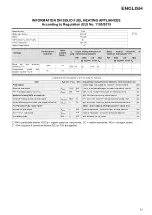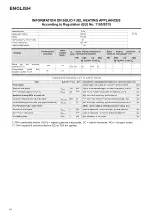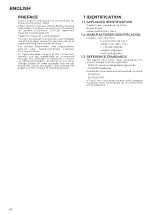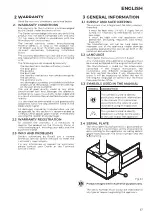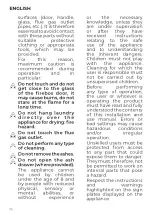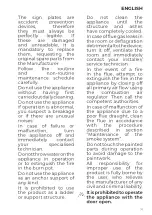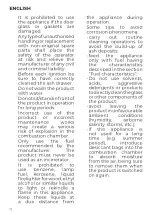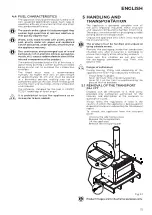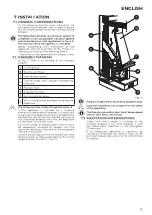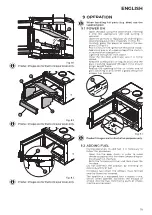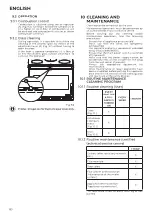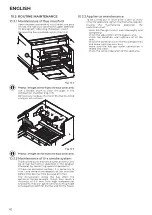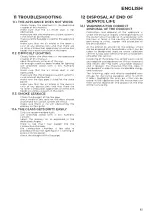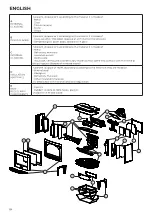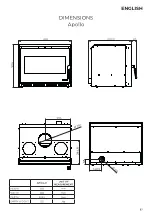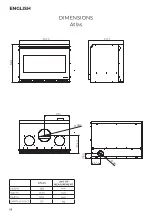
73
ENGLISH
4.4 FUEL CHARACTERISTICS
The appliance should preferably be fuelled with
well seasoned beech/birch wood. Each type of
wood has different characteristics that also affect
the combustion efficiency.
The use of conifers (pine-fir) is discouraged: they
contain high quantities of resinous substances
that quickly clog the flue.
Waste, bark, wood treated with paints, panels,
coal, plastic materials, paper and cardboard
cannot be burned, under penalty of forfeiture of
the appliance warranty.
The continuous and prolonged use of wood
particularly rich in aromatic oils (e.g. eucalyptus,
myrtle, etc.) causes sudden deterioration of the
internal components of the product.
The nominal yield declared in kW of the stove, is
obtained by burning a correct quantity of wood,
being careful not to overload the combustion
chamber.
The wood must have a recommended
humidity no higher than 25%, an ideal length
of approximately 33 cm and must be placed
in a horizontal position, making sure not to
completely obstruct the slots in the fire box grate
and the front and rear holes of the combustion
air distributor.
The reference standard for the fuel is UNI/ISO
17225-1 “wood logs of forest origin”.
It is prohibited to use the appliance as an
incinerator to burn rubbish.
5 HANDLING AND
TRANSPORTATION
The appliance is delivered complete with all
the parts required: mounted metal structure
and separate combustion chamber inner lining.
These parts are contained in a packaging suitable
for long distance transportation.
Unpack the appliance only when it has reached
the installation site.
The product must be handled and unpacked
using suitable means.
Remove the packaging inside the combustion
chamber only after installation is complete to
ensure the integrity of the refractory cements.
Make sure that children do not play with
the packaging components (e.g. films and
polystyrene):
Danger of suffocation!
During moving, lifting, and unpacking of the
appliance the following is absolutely necessary:
• always keep it upright;
• never tip it over into a horizontal position;
• never tilt it on the front to avoid breaking the
glass of the fire box door.
5.1 REMOVAL OF THE TRANSPORT
PALLET
Disposal can be entrusted to a third party,
provided only companies authorised for the
recovery and elimination of the materials in
question are used.
Always follow the regulations in force in the
country in which the appliance is being used for
disposal of materials and possibly for the disposal
report.
To remove the appliance from the transport
pallet:
• Unscrew the side fixing screws
• Remove the fixing brackets
• Lift the appliance
• Remove the transport pallet
Product images are for illustrative purposes only.
Fig. 5.1





